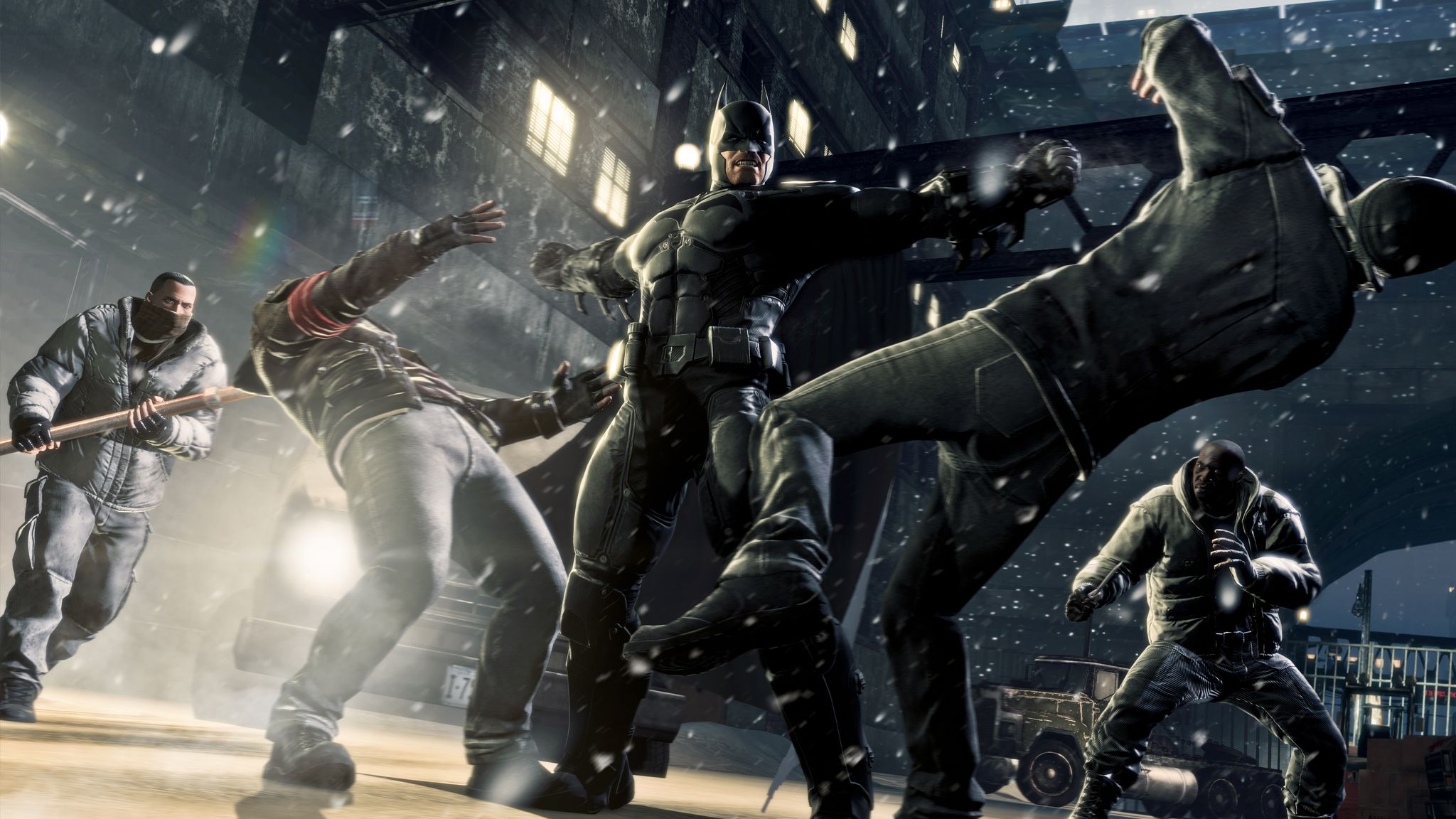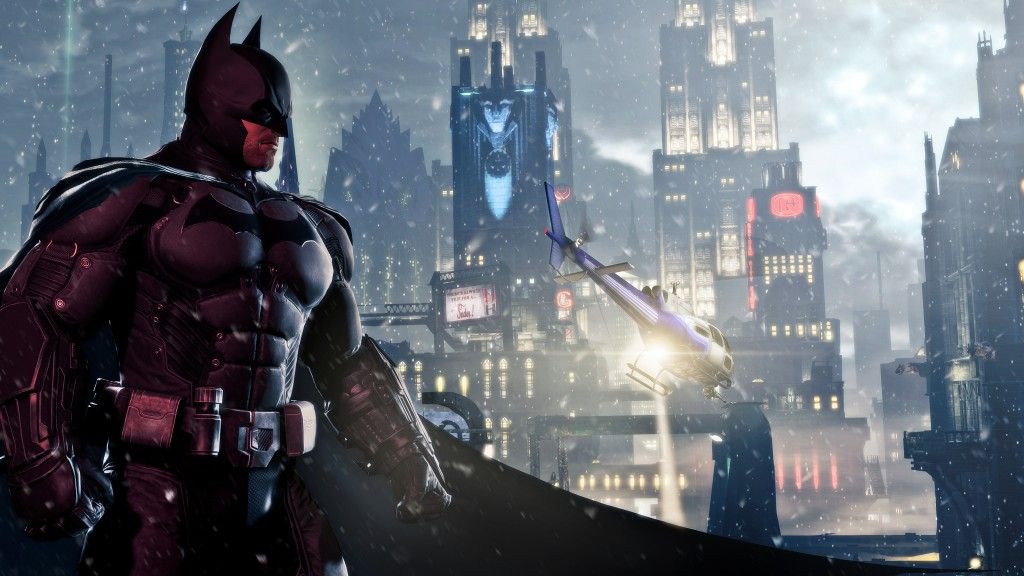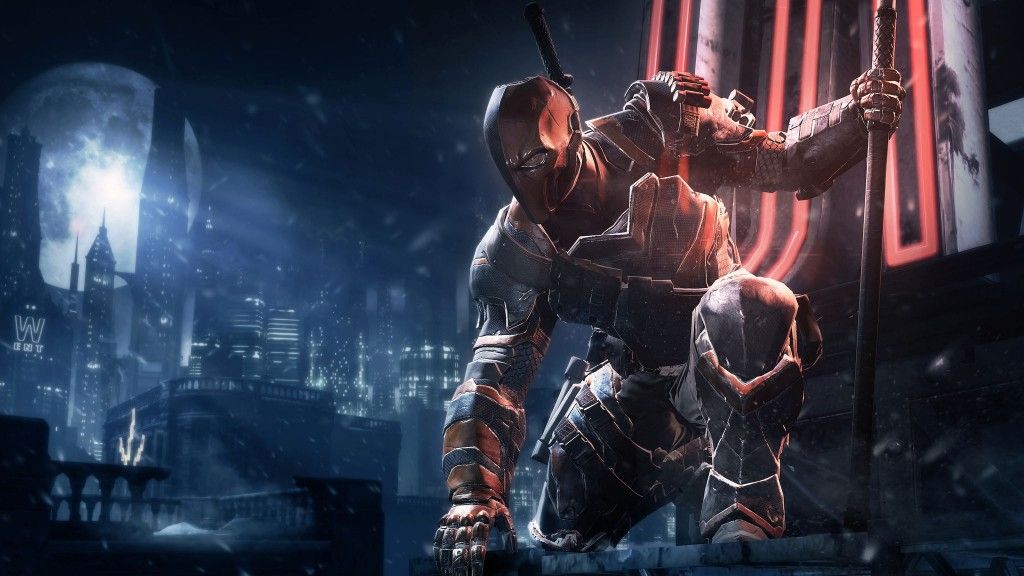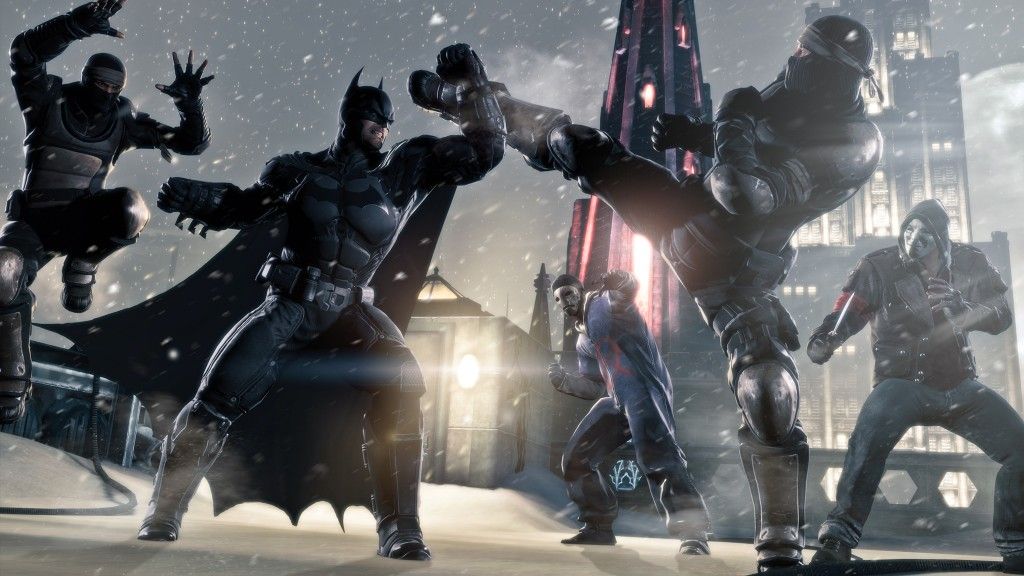A while back, I wrote a preview regarding my thoughts as to where Rocksteady Studios could take the Batman: Arkham video game franchise in its next iteration. Suffice to say, I was mostly way off; Rocksteady is no longer the lead developer, as they have handed off their engine and assets to Warner Bros. Montreal. While the next game in the series, Batman: Arkham Origins, is not the sequel and conclusion to the Arkham series that I had hoped, there were some amazing changes in gameplay and overall design that have convinced me that Arkham Origins could be one of the strongest Batman games ever.
Batman: Arkham Origins, whilst a part of the Arkham storyline, represents a monumental shift in the direction of the franchise. The previous two games owed a lot of their success to their roots based in the 1992 series, Batman: The Animated Series. This included scriptwriter Paul Dini, and voice-actors Kevin Conroy and Mark Hamill as Batman and The Joker, respectively. All three of these major pieces of the previous Arkham games have been abandoned as Warner Bros. moves forward with Origins. Roger Craig Smith has stepped in to fill the shoes of Kevin Conroy, and from the little bit of his voice that I heard, I can say for the moment that his voice is serviceable. He was basically doing a younger version of Conroy's Batman, which is both admirable and appropriate given the fact that it is the same continuity. Troy Baker's Joker was not featured in the demo, and since it was not story-heavy, I could not get a handle on the style of the narrative versus that of Paul Dini.
Fans of the original Tim Burton films, including and especially Batman Returns (1992), will love the the look of Gotham City in Arkham Origins. It maintains the dilapidated, Dickensian look for the more crime-ridden areas of the city established in Arkham City, but there is obviously a lot more to explore this time around with the entire city being opened up. The more Gothic elements established in the Burton films are here, complete with snow, which just screams Batman Returns. Now all we need is a costume ball scene with Selena Kyle and Bruce Wayne and we will be set (yes, it was done first in 1992, not in 2012's The Dark Knight Rises).
The primary focus of the demo was on the improvements to the gameplay and added enemy types. The sequence that I played involved solving a murder perpetrated by one of the game's more-publicizied antagonists, Deadshot (a villain who had a cameo in Arkham City).
Detective Mode has received a much needed improvement - seeing as how a carry-over of its minor improvements from the second game would make it look stale, and every game out there has utilized their own version of the system. Batman can now reconstruct crime scenes from the ground up. The process is essentially an augmented and more comprehensive version of the changes that were made to Detective Mode in Arkham City. Traces of evidence are focused on by Batman and then placed into what is literally a Bat-data recorder which enables him to play back or forward how the crime transpired (in holographic form) so as to get all the details that may or may not have left behind any physical evidence. Between this game and the others, it was undoubtedly the most involved version of Detective Mode.
I will point out two issues I had with this part of the demonstration. First and most importantly, while an improved version of Detective Mode is welcome and needed, it makes no sense continuity-wise. Why would a Batman, who has only clocked in about a year and change on the job, have more advanced crime-fighting technology than the more refined Batman in the other two games? Did he scale it back to make things interesting for himself? Also, the utilization of Deathstroke is welcome given his absence from the previous games, but it makes Deadshot seem a little redundant. Yes, I know that while they are both expert marksman, one is close-combat while the other is a sniper - hence why I said it is a little redundant.
One of the drawbacks of Asylum and City was that the combat lacked any major challenge on behalf of the player, even in the midst of its fluidity and percussion. At their core, every confrontation with enemies was a simple mash of the square button, peppered by the occasional dodge and/or counter with the X and/or triangle button. This was switched up every now and then with varied enemy types, but it bordered on monotony in terms that no matter what you encountered, the response was built into your muscle memory. There is a new enemy type in Arkham Origins which counters this feeling in the form of martial-arts trained enemies. Unlike the previous enemy types, these guys will counter Batman when he strikes them, and even counter his counters. The resulting effect is a combat system that is momentarily slowed down, thus diluting a simple button-mashing system that plagued the previous games and really reinvigorates the experience. As a veteran fan of the series, it made me sit up in my seat in awe - combat felt a lot more engaging with that little addition. It was a welcome new challenge to the system.
I am interested in seeing how the new-look Gotham City, new enemies, and improved Detective Mode will play out in the game. I did not have that much time with the demo, but from what I saw, these seemingly minor improvements could go a long way in the final game - my personal expectations are thus extremely high. Do not disappoint me, Warner Bros. Montreal.
Batman: Arkham Origins will be published by Warner Bros. Interactive Entertainment for the PlayStation 3, Xbox 360, Wii U, and PC on October 25th, 2013. A Vita version of the game, Batman: Arkham Origins - Blackgate, is also in development by Armature Studio and will be released on the same day.




